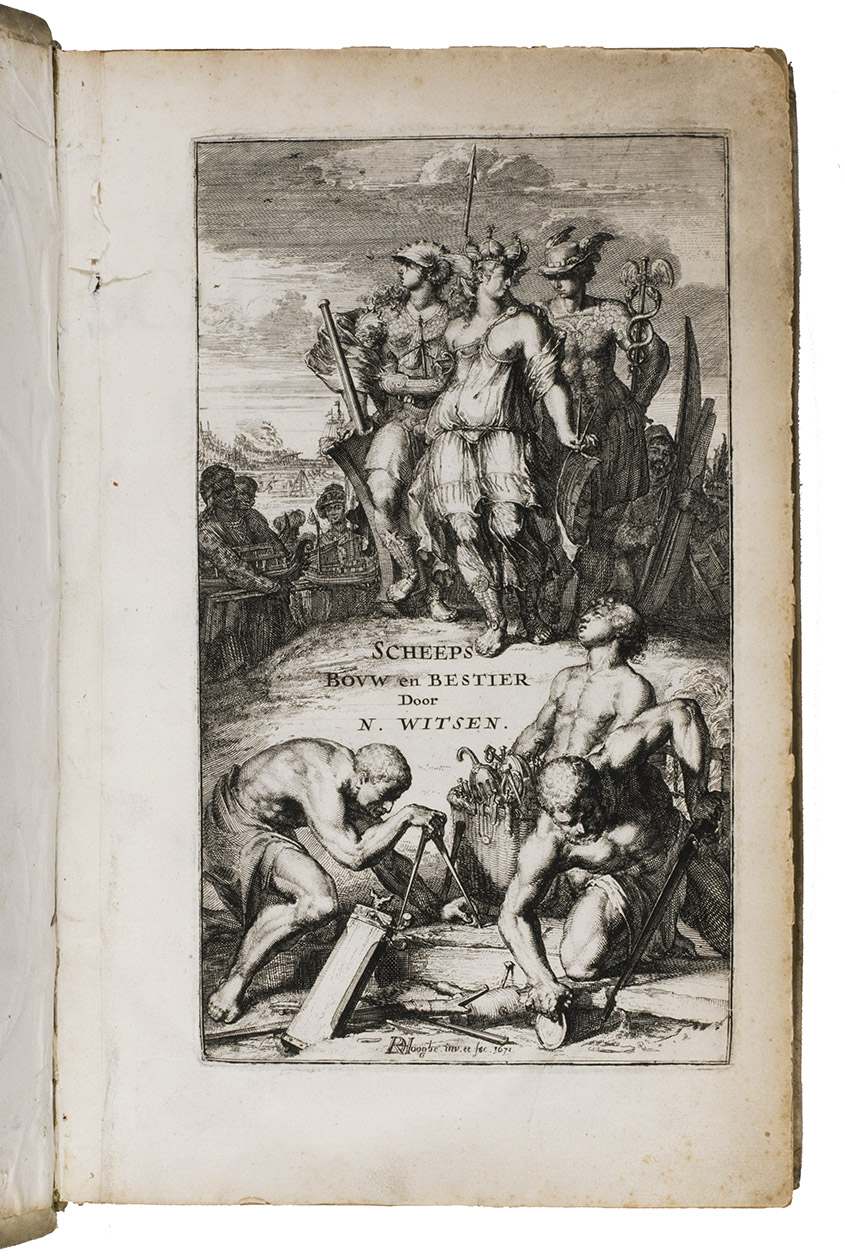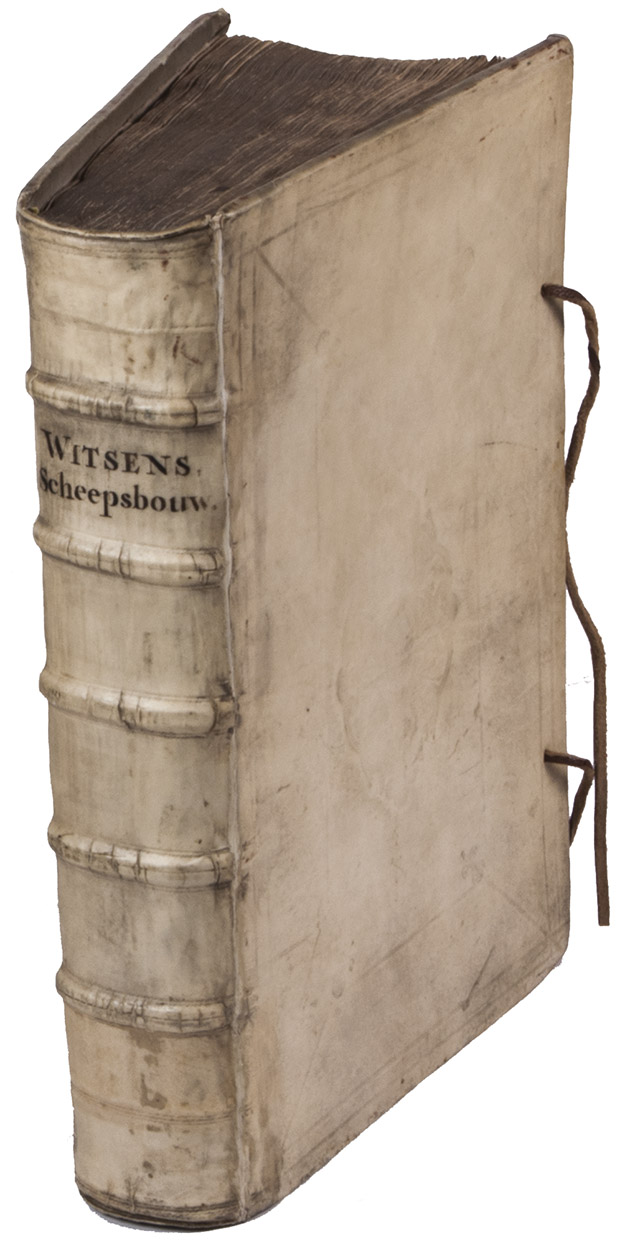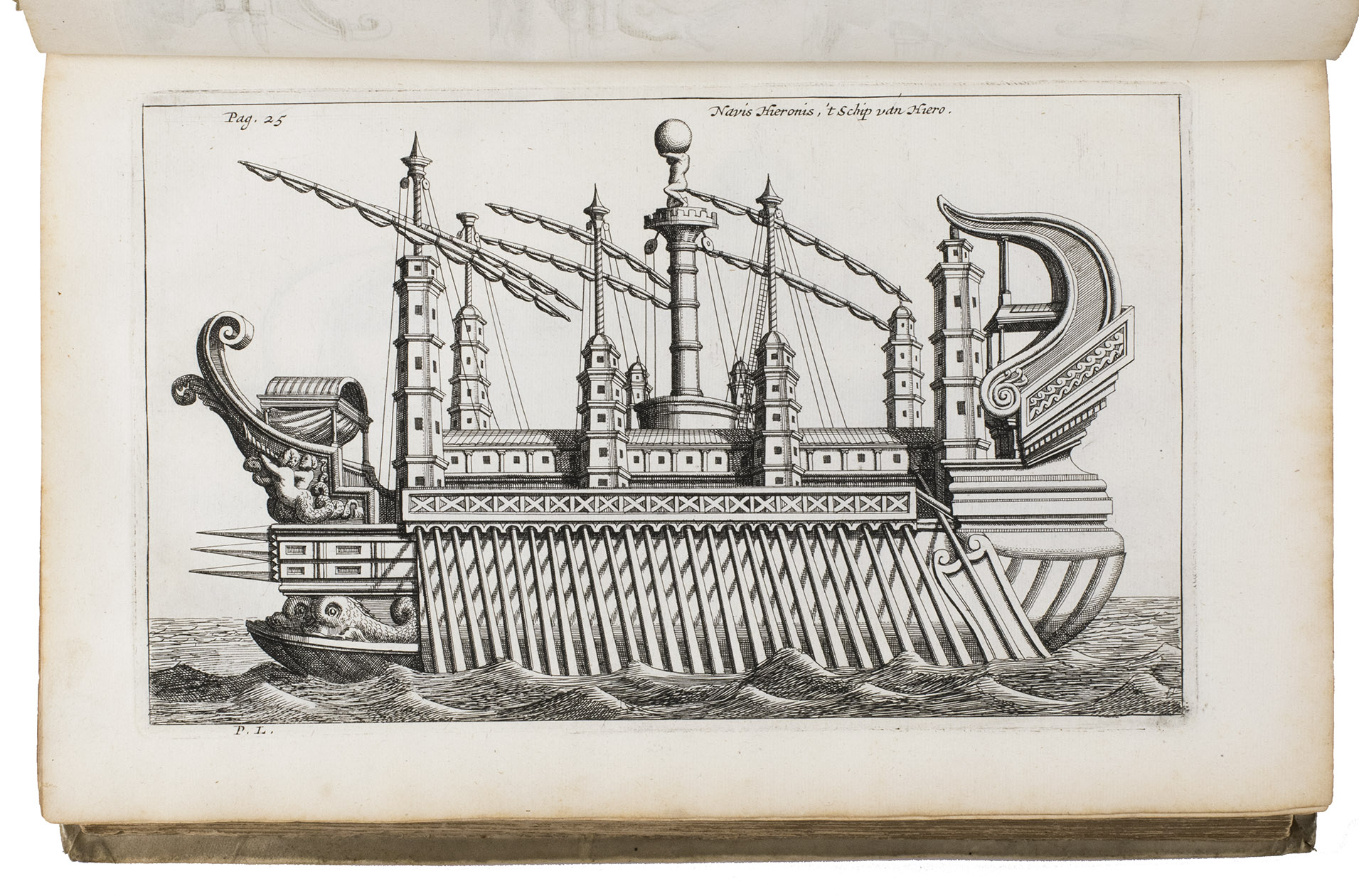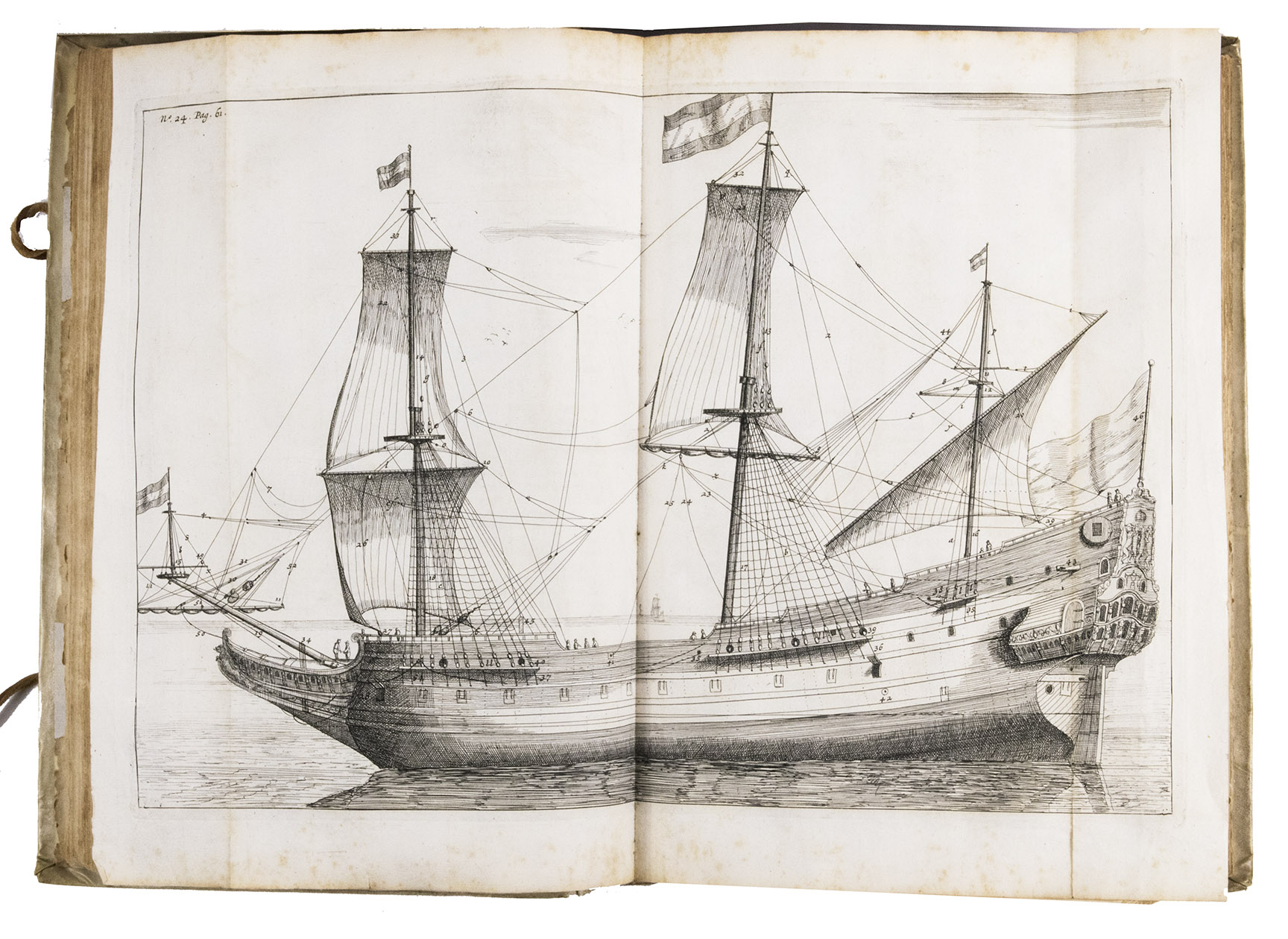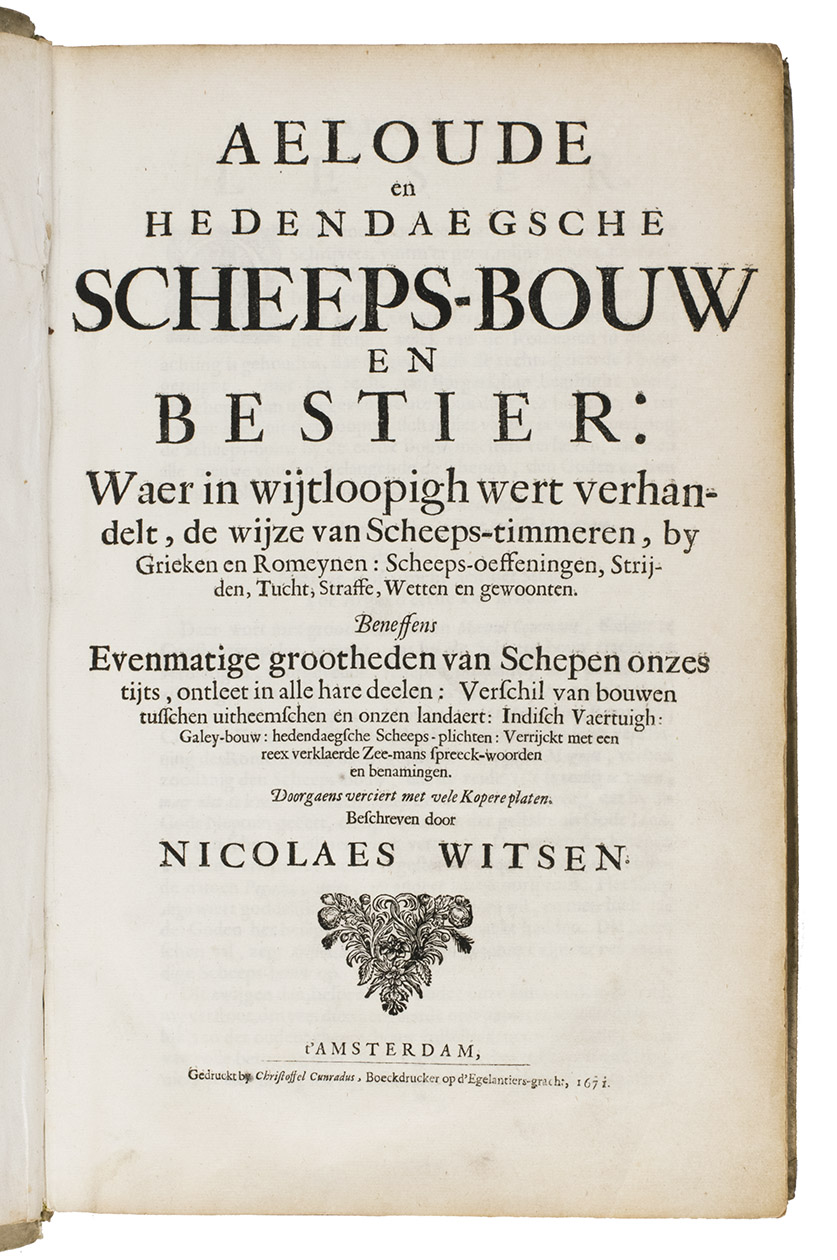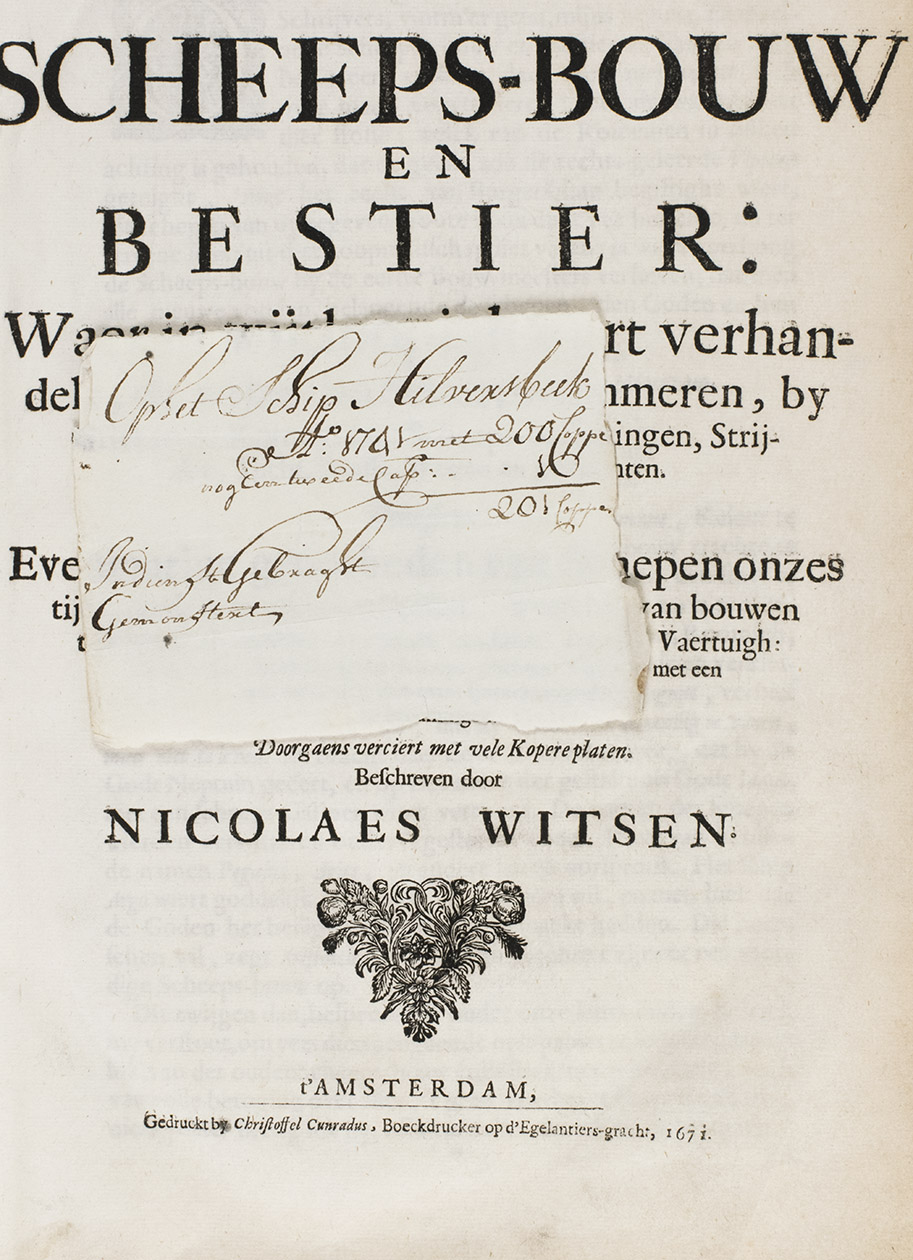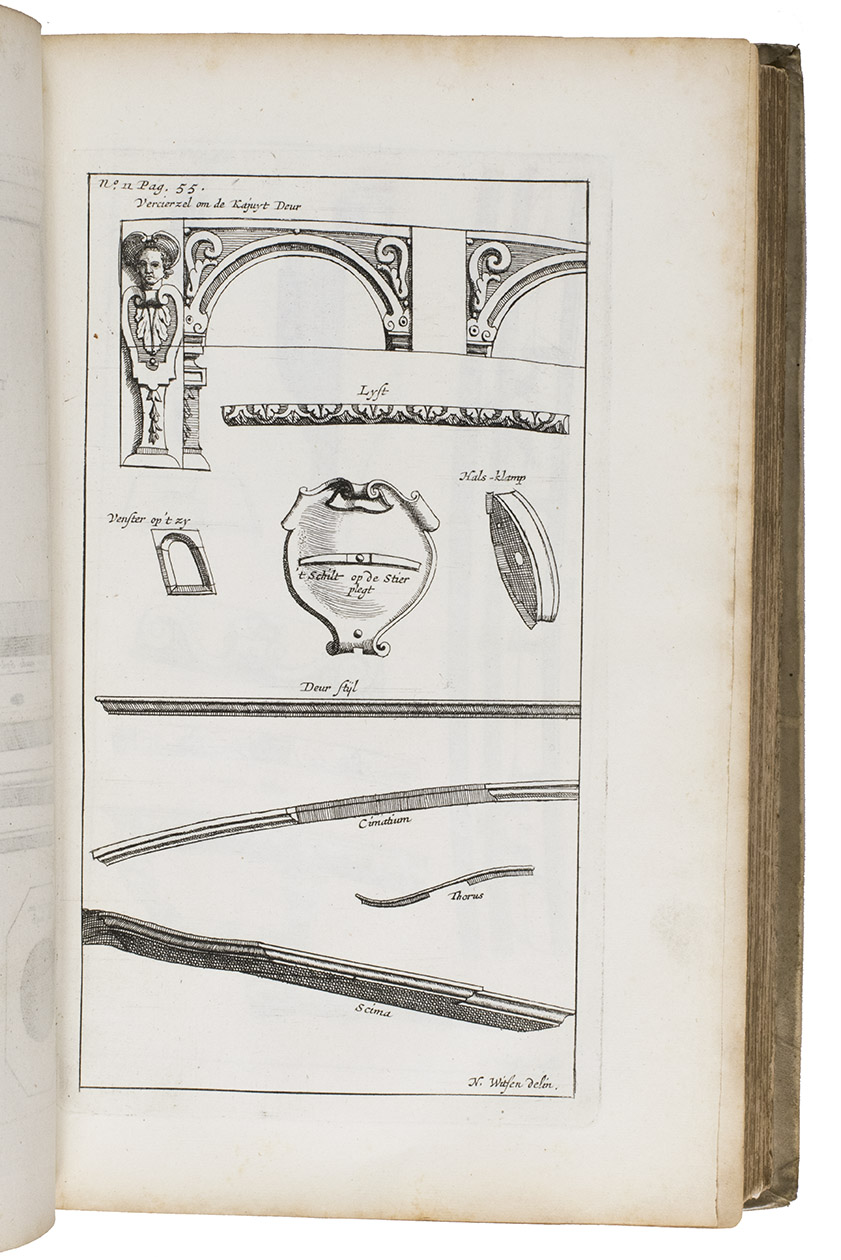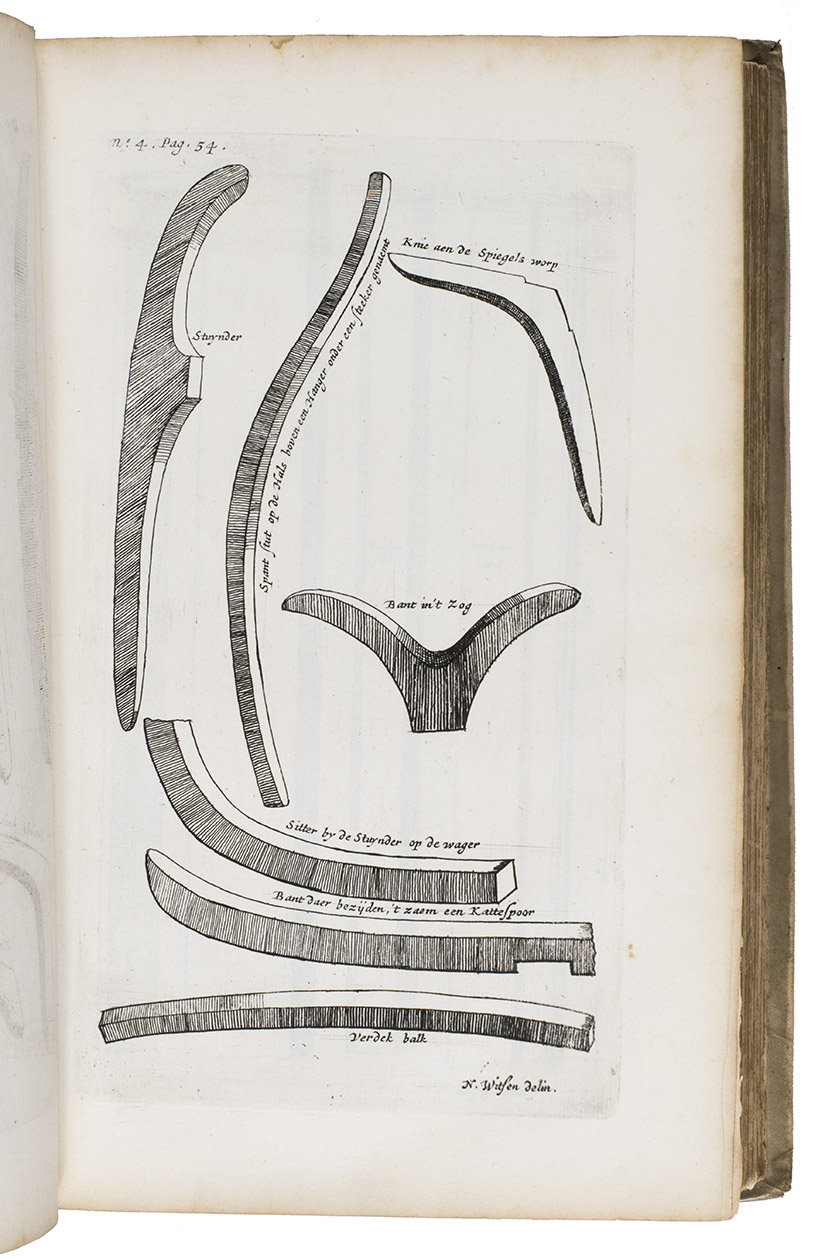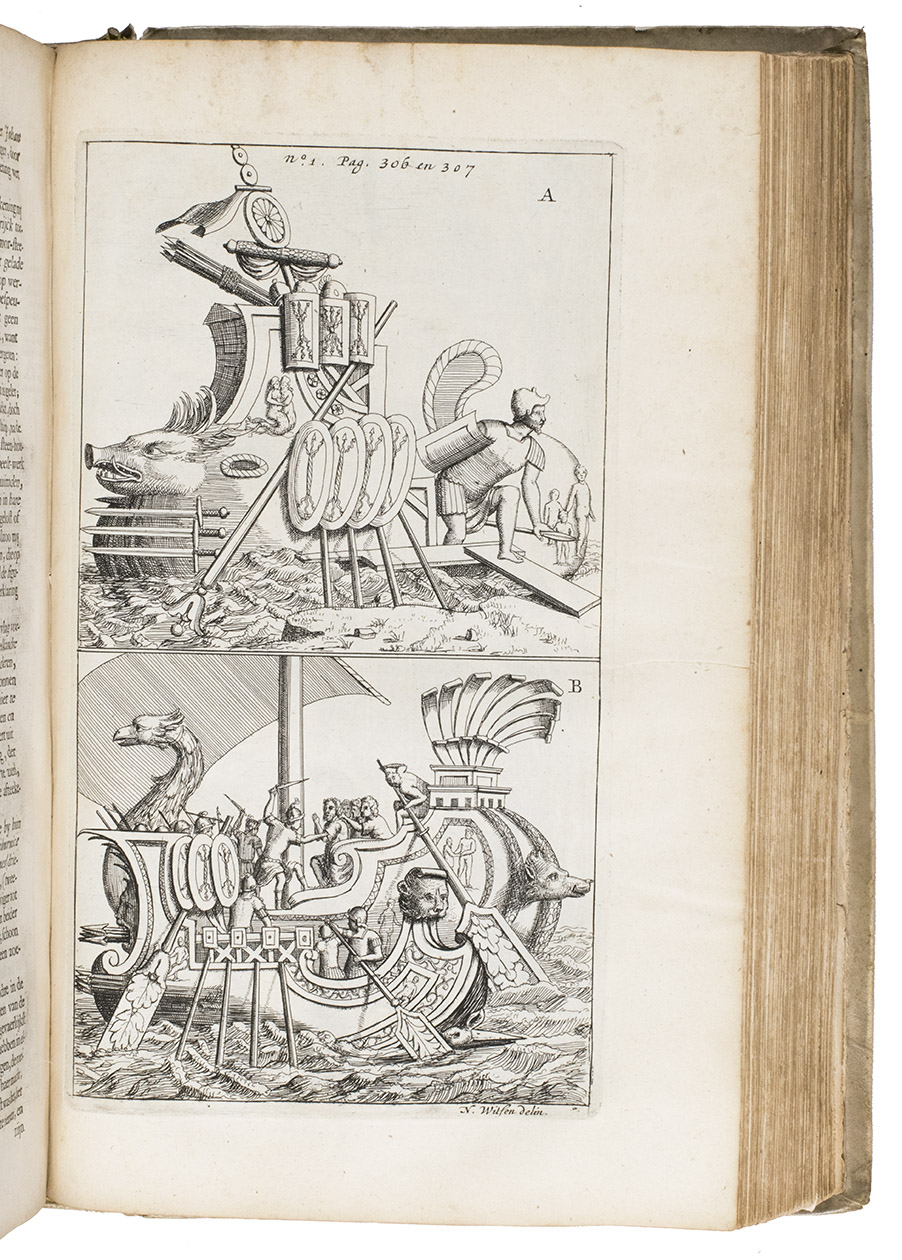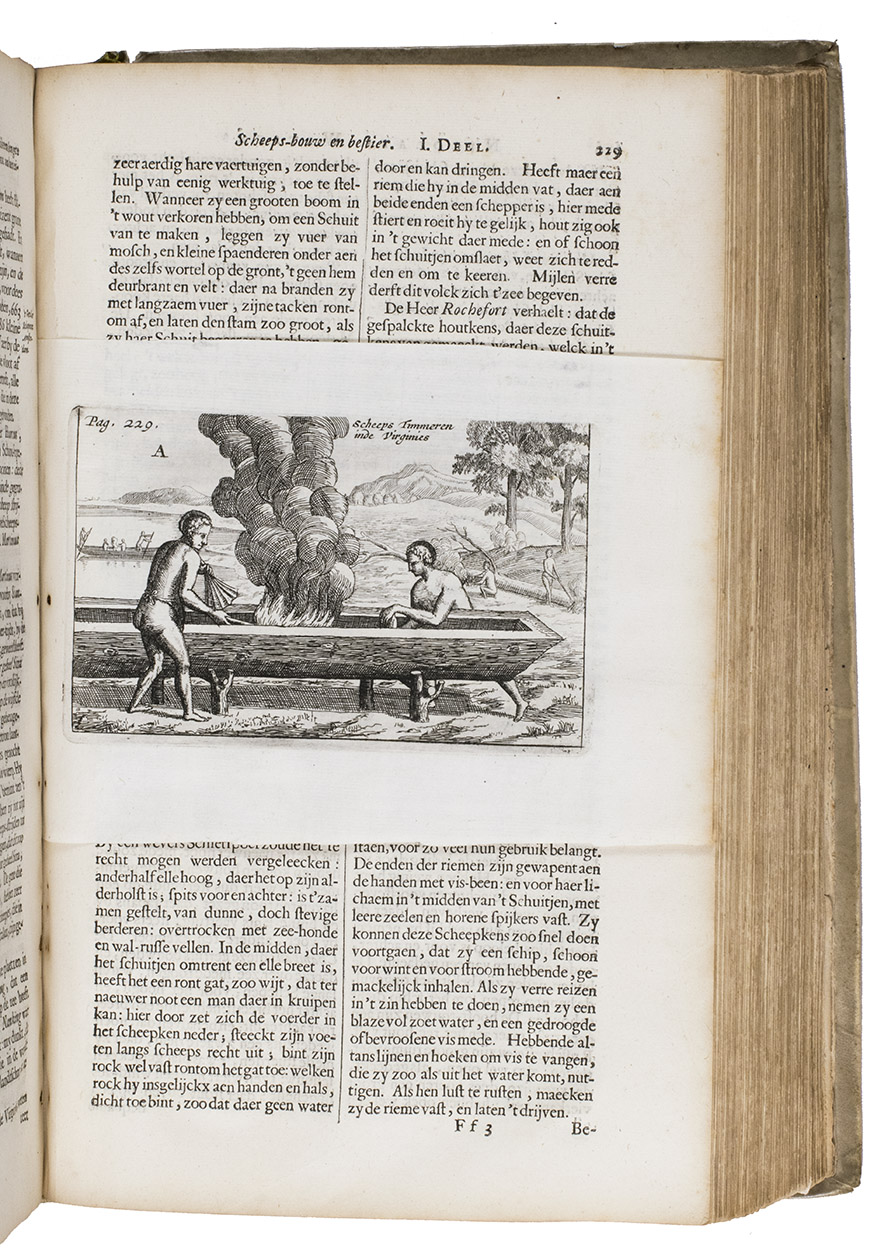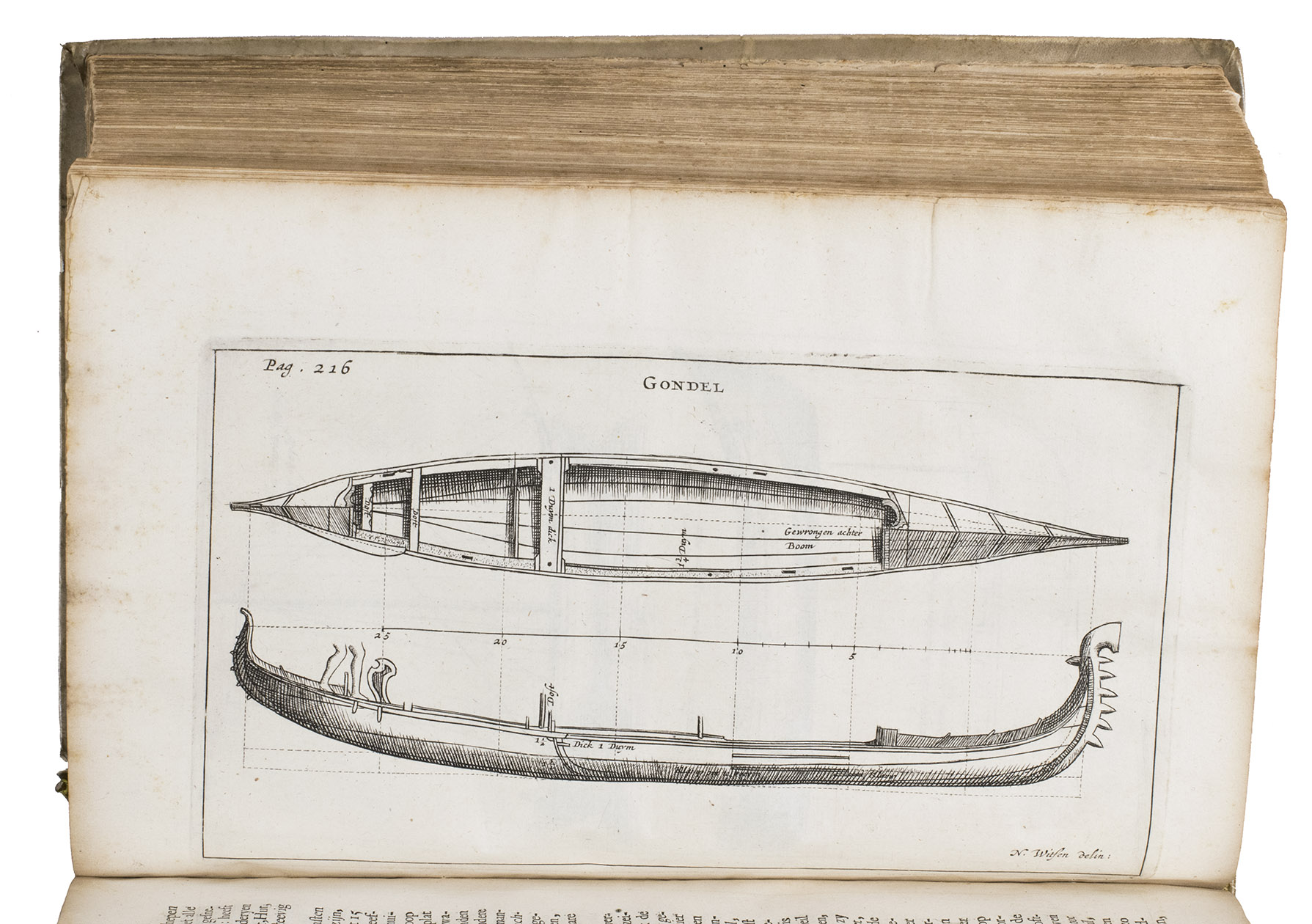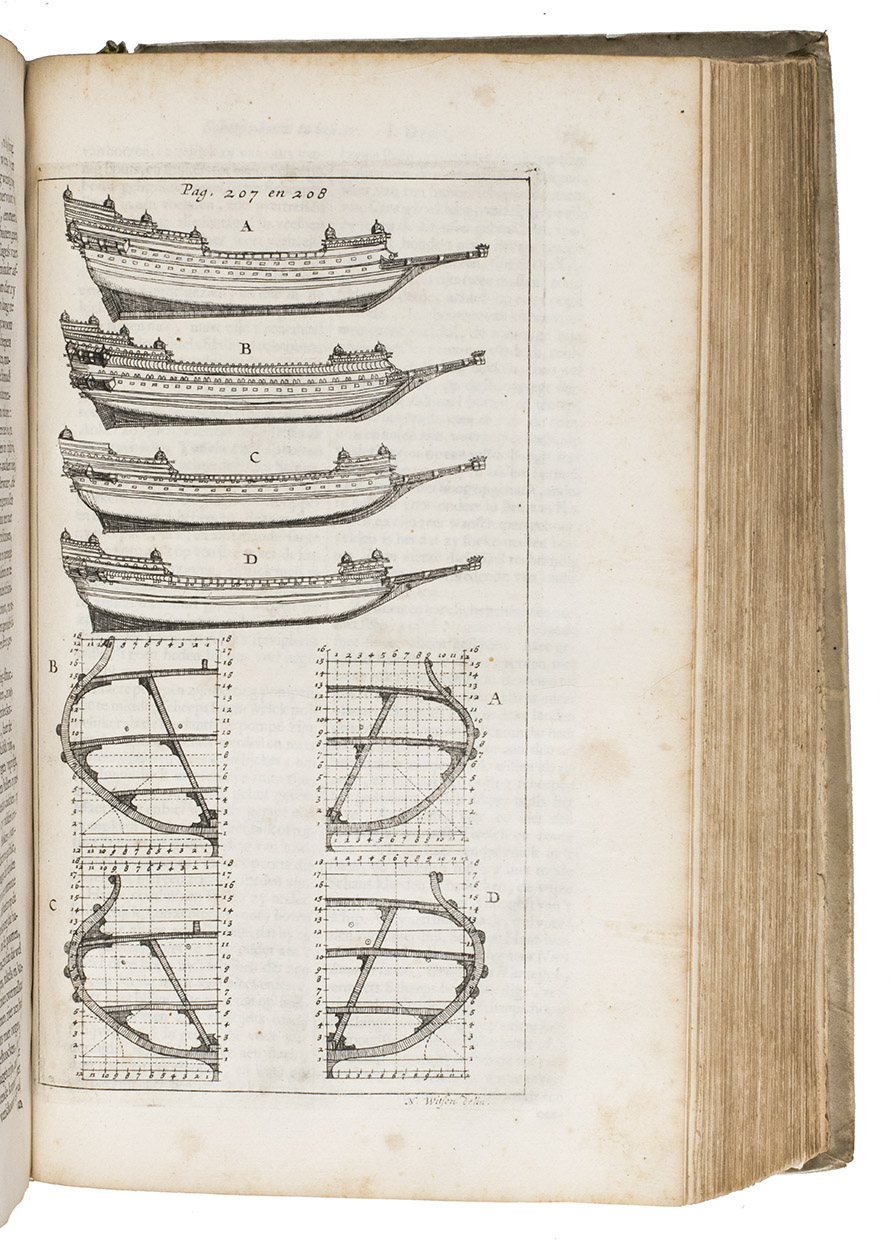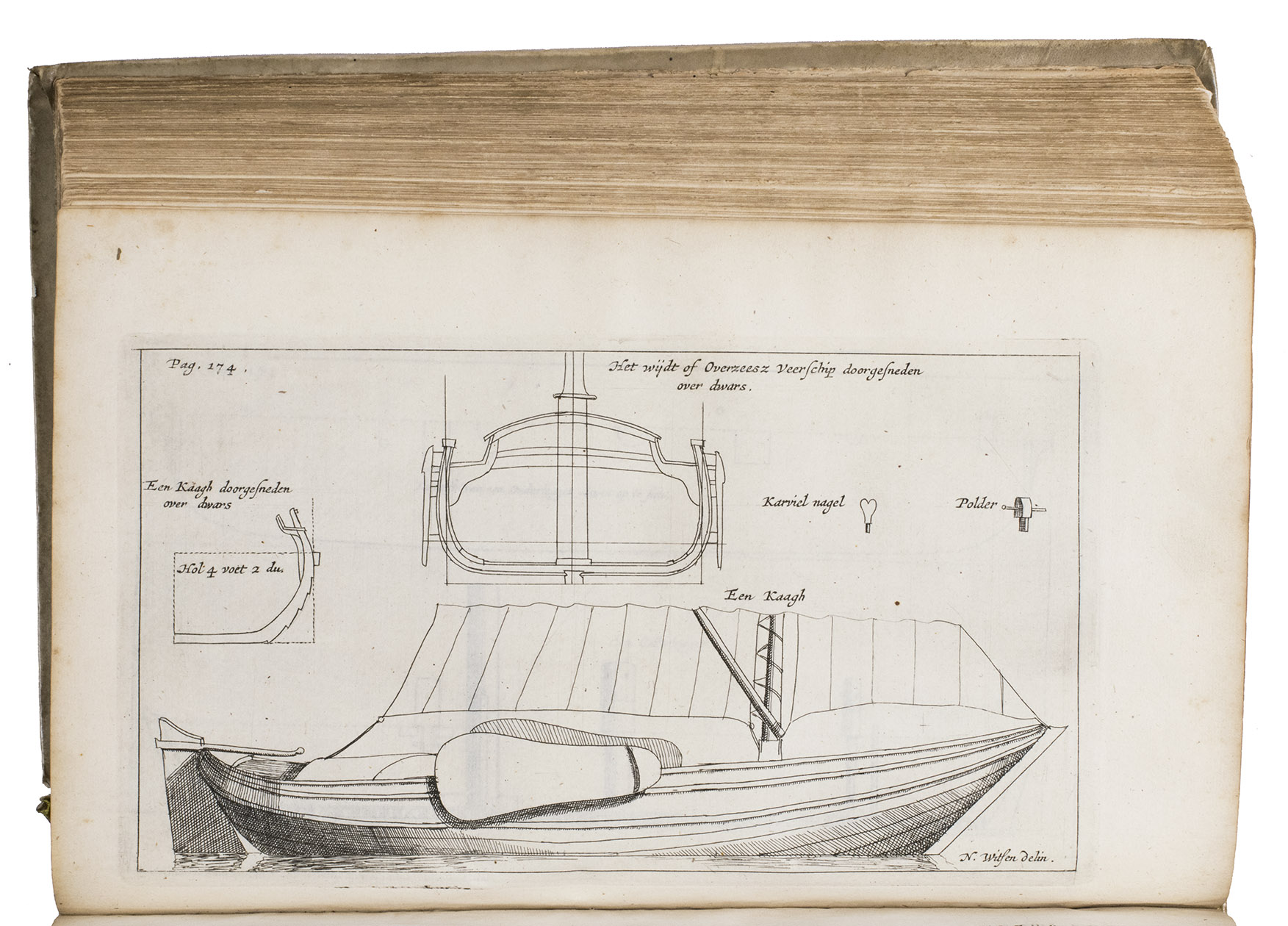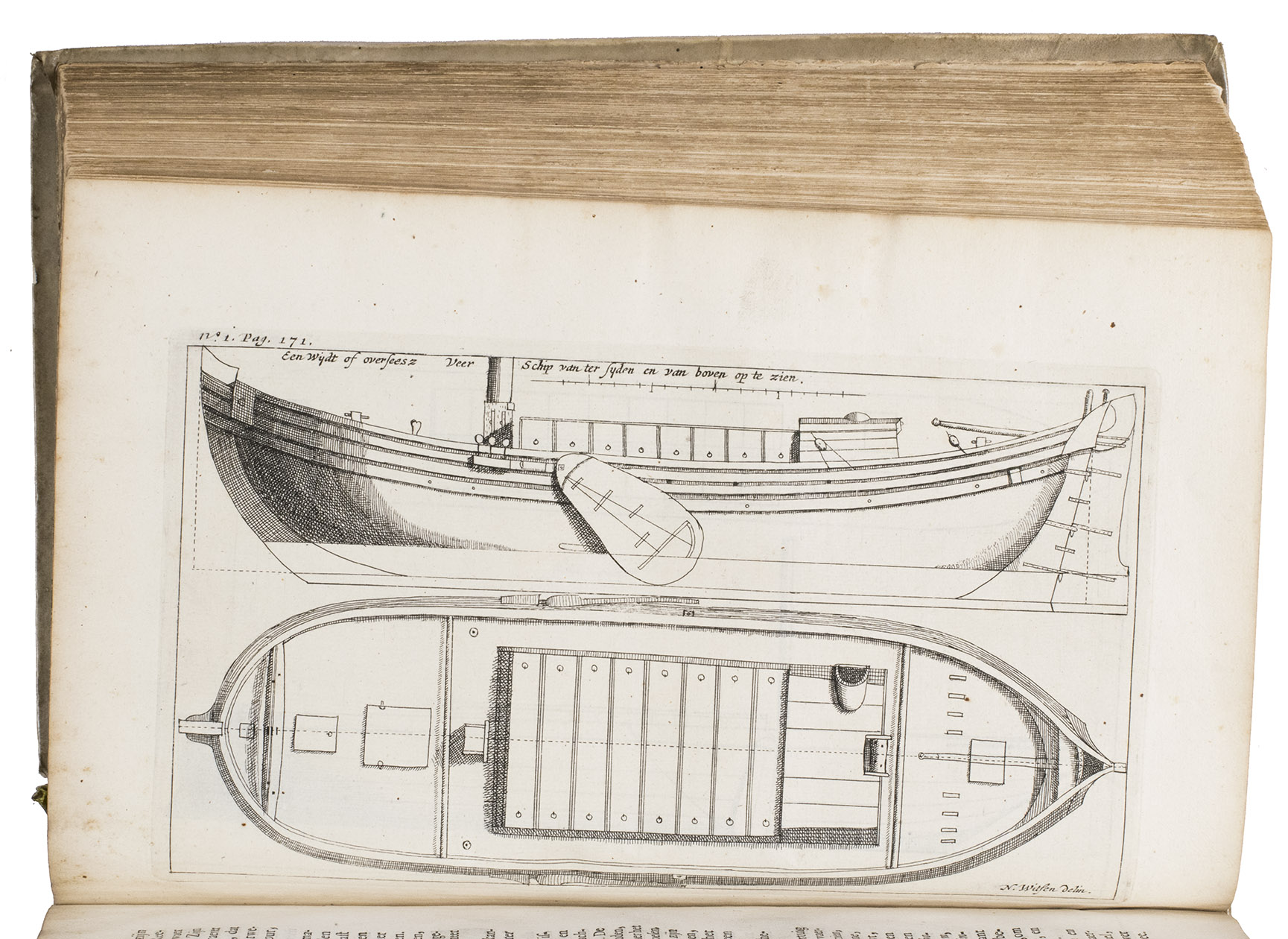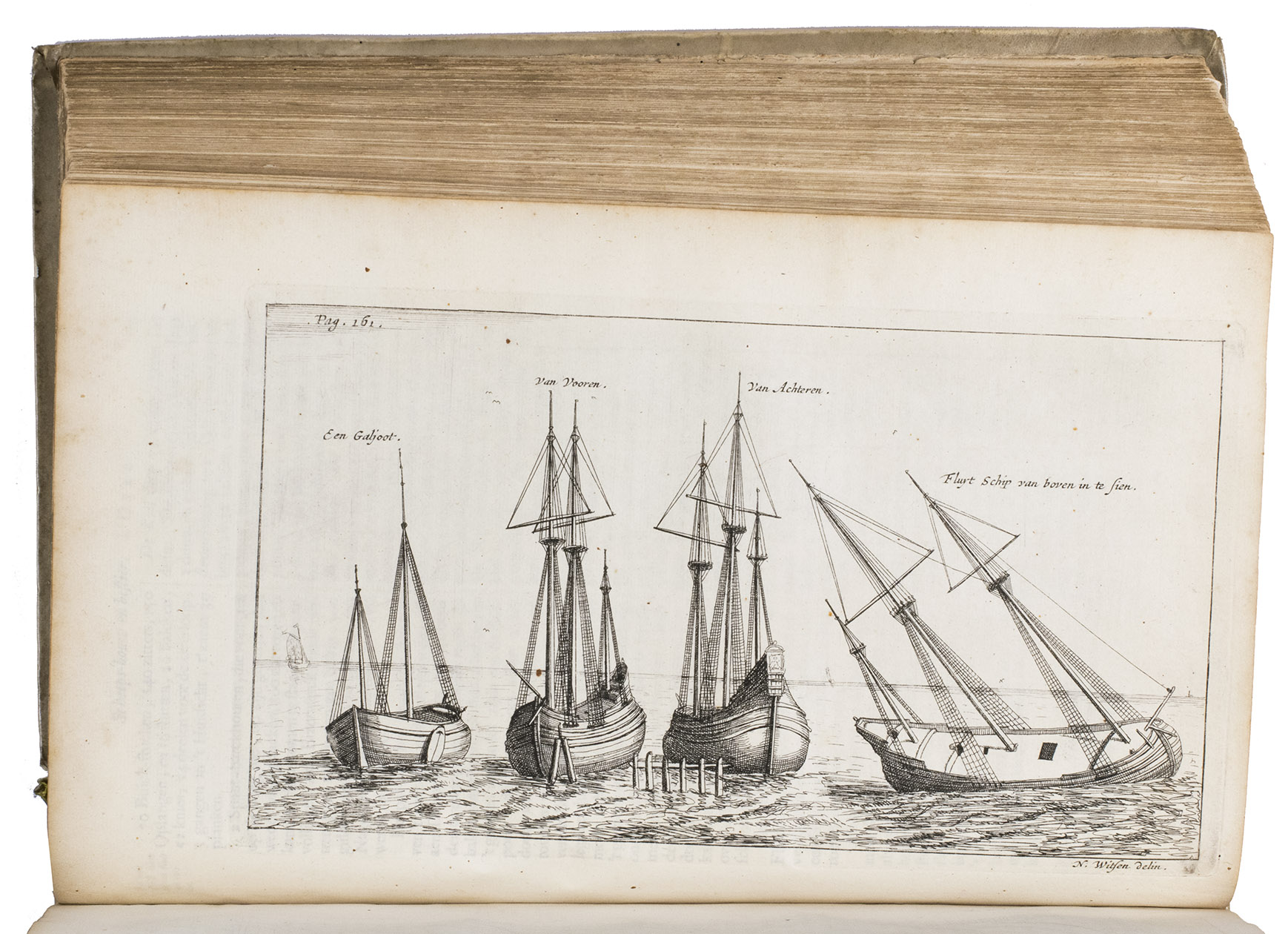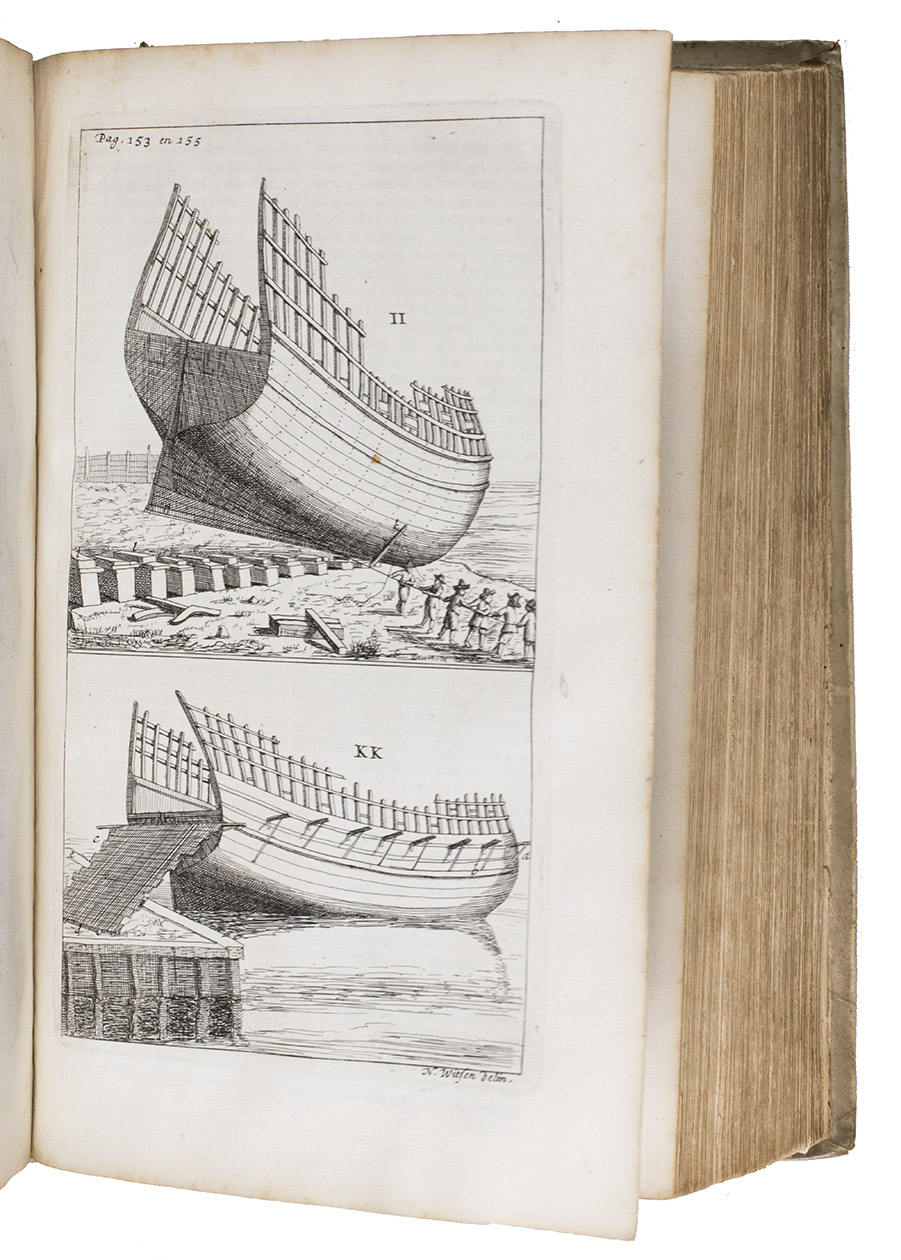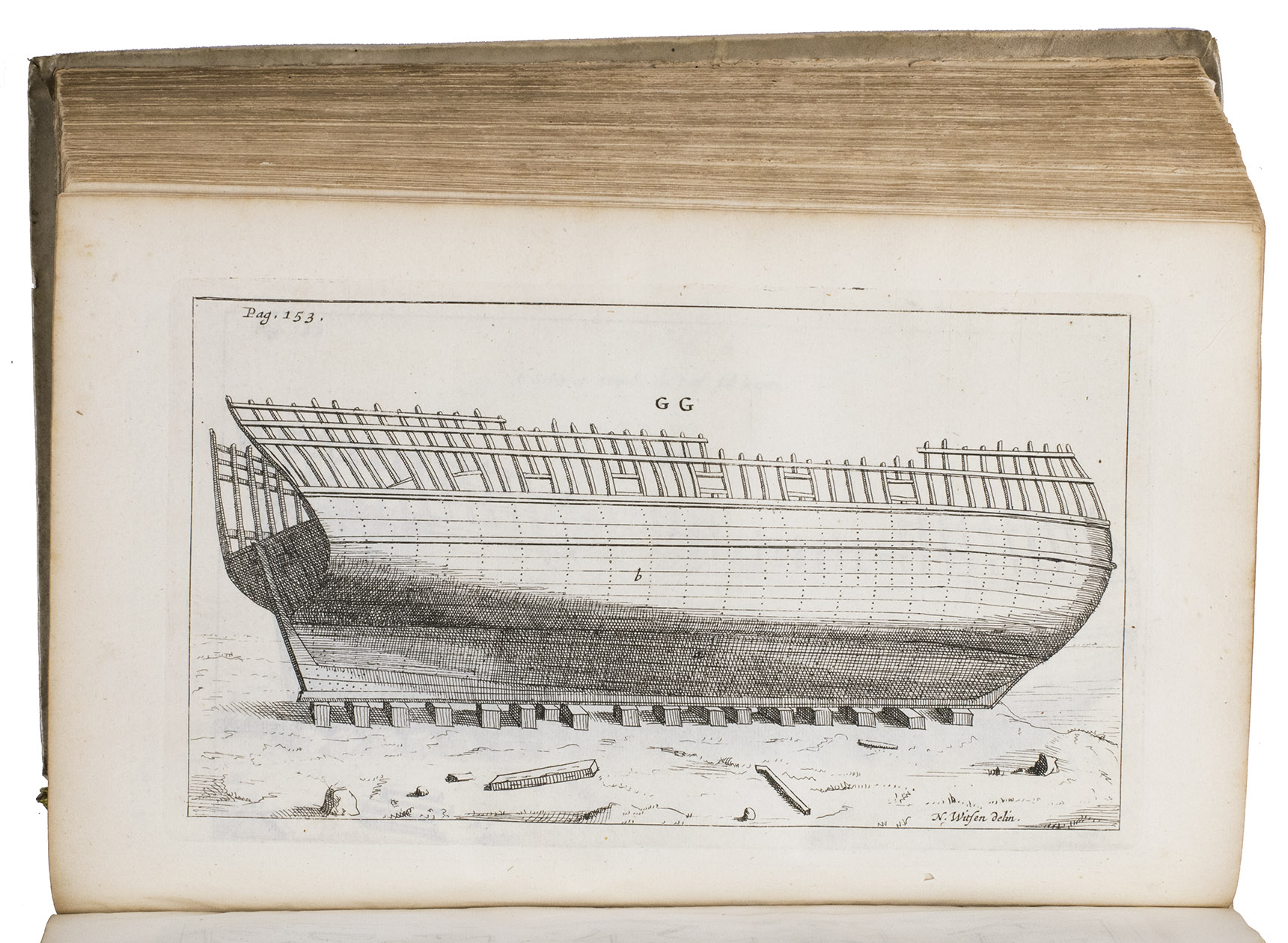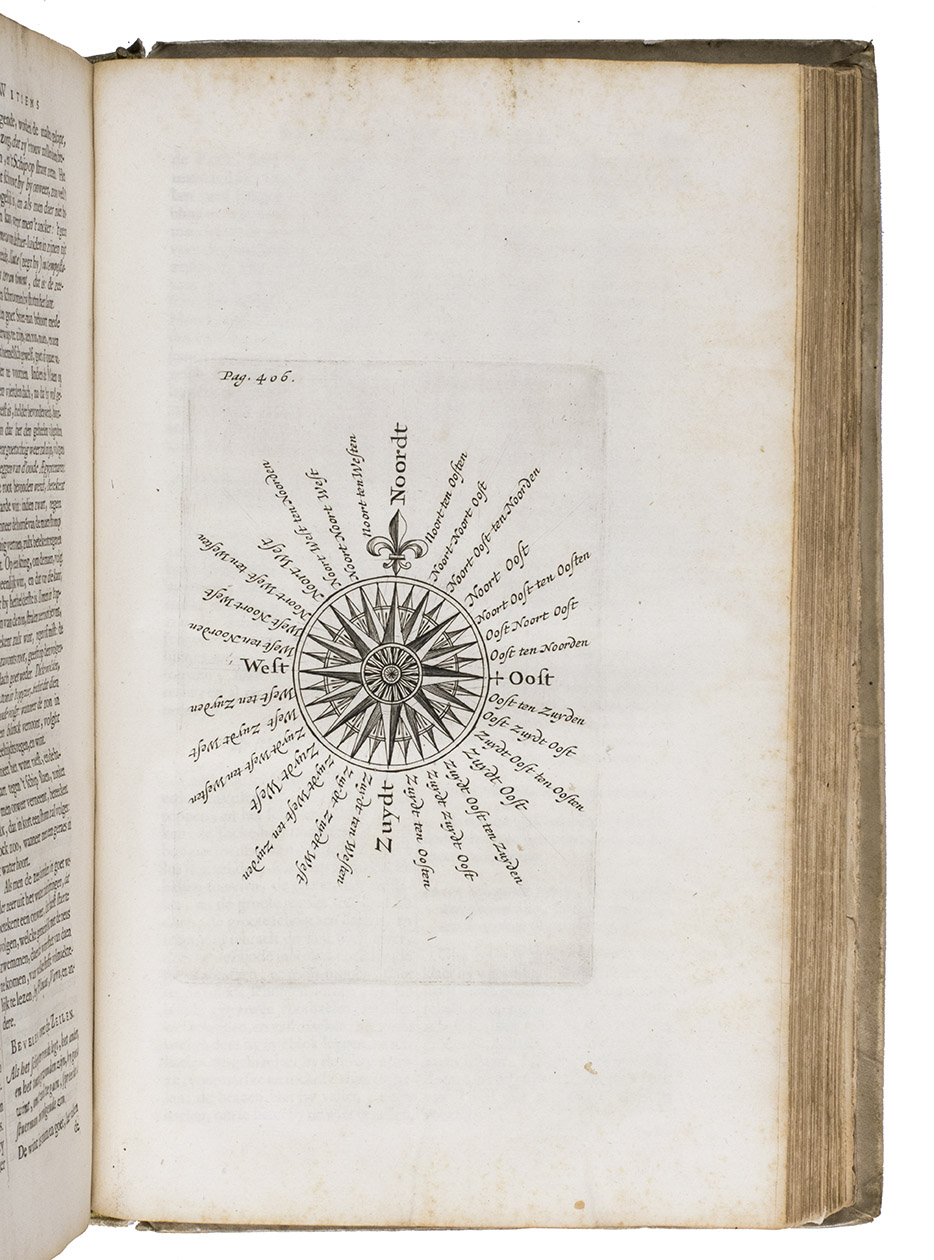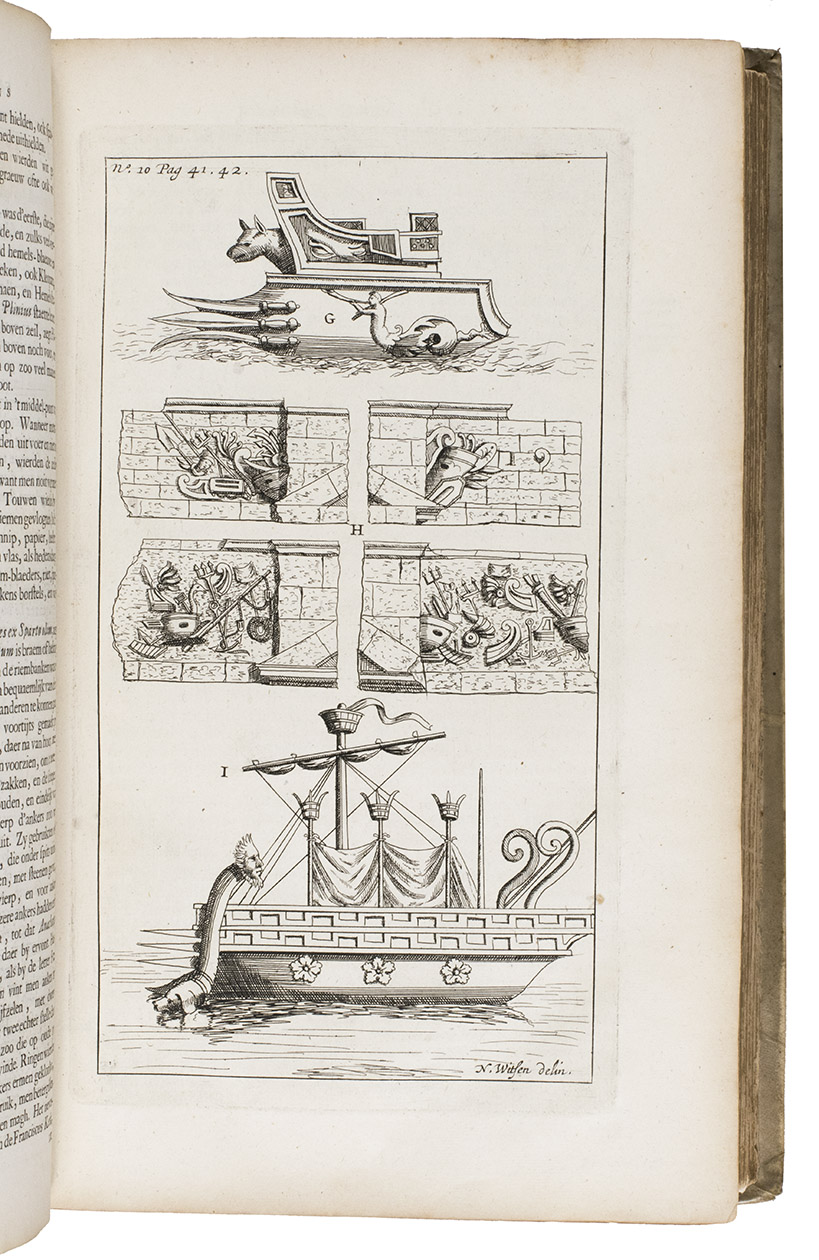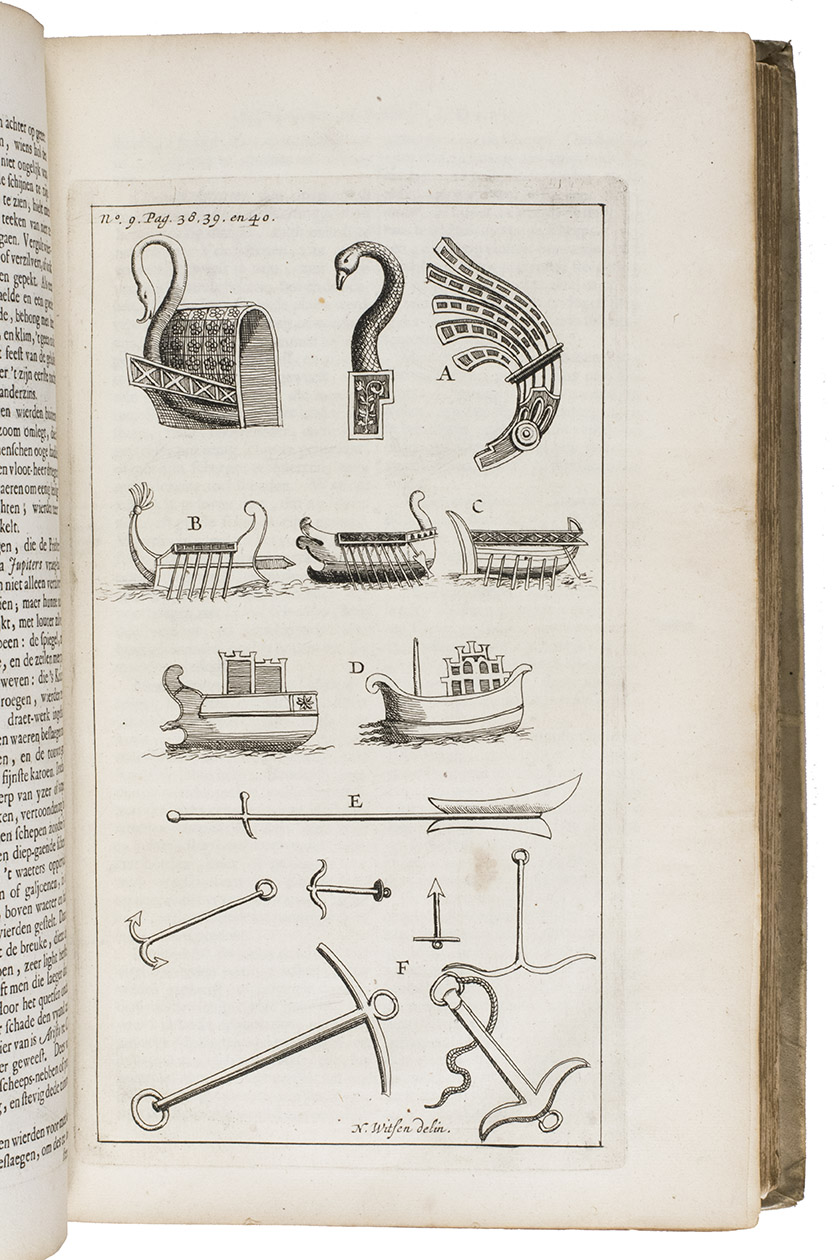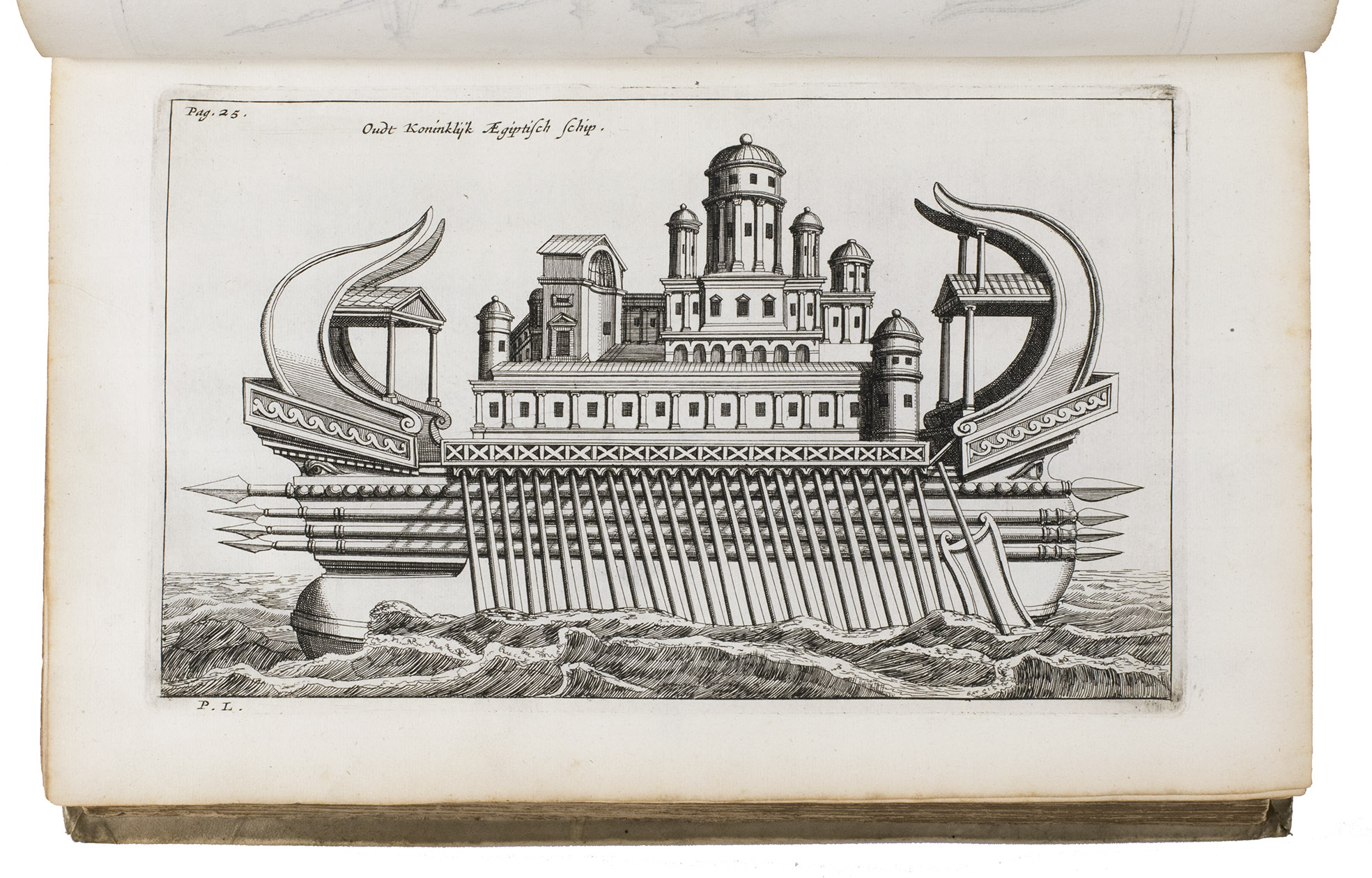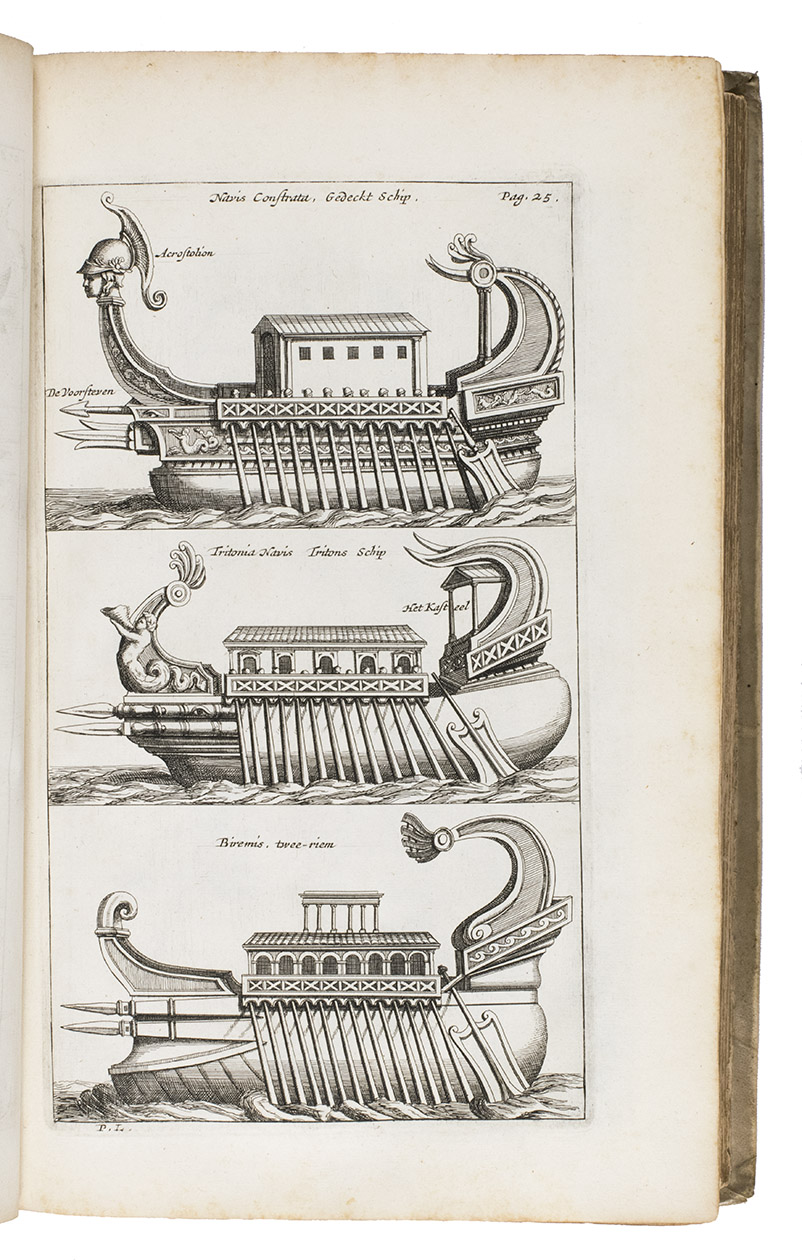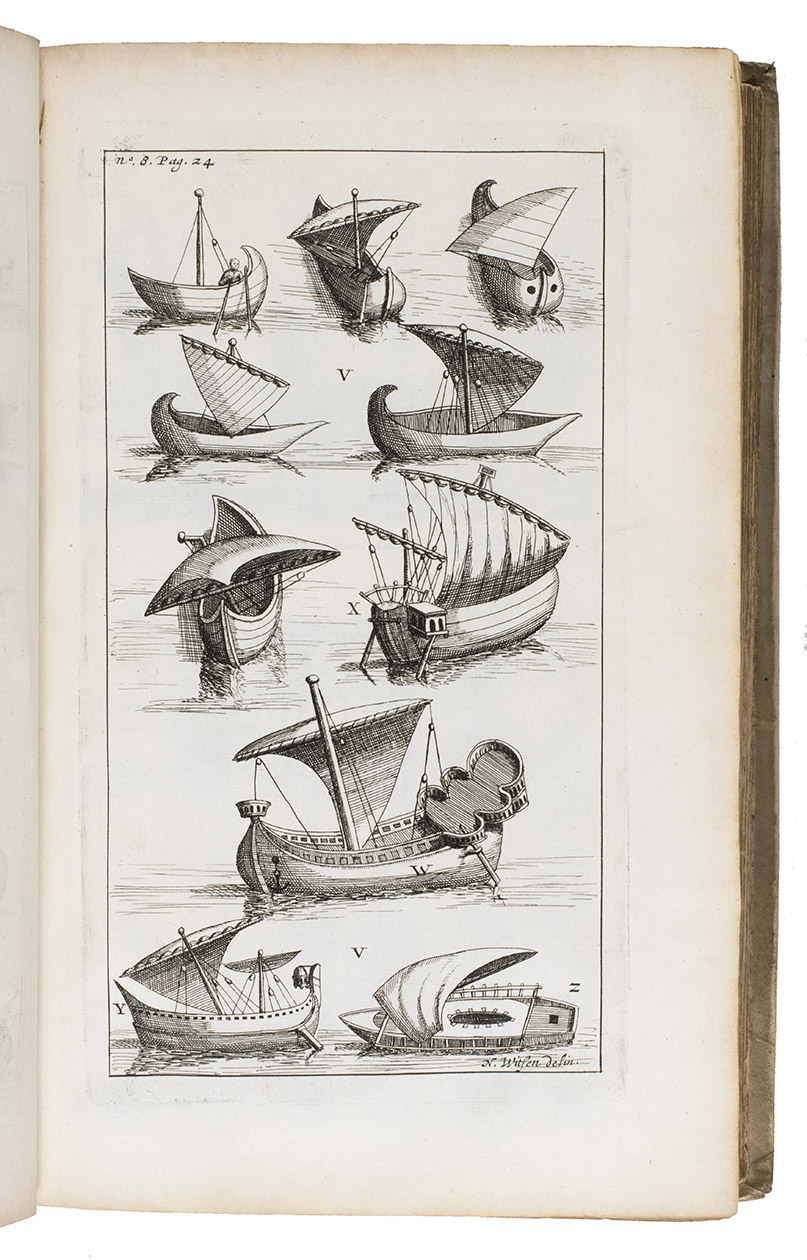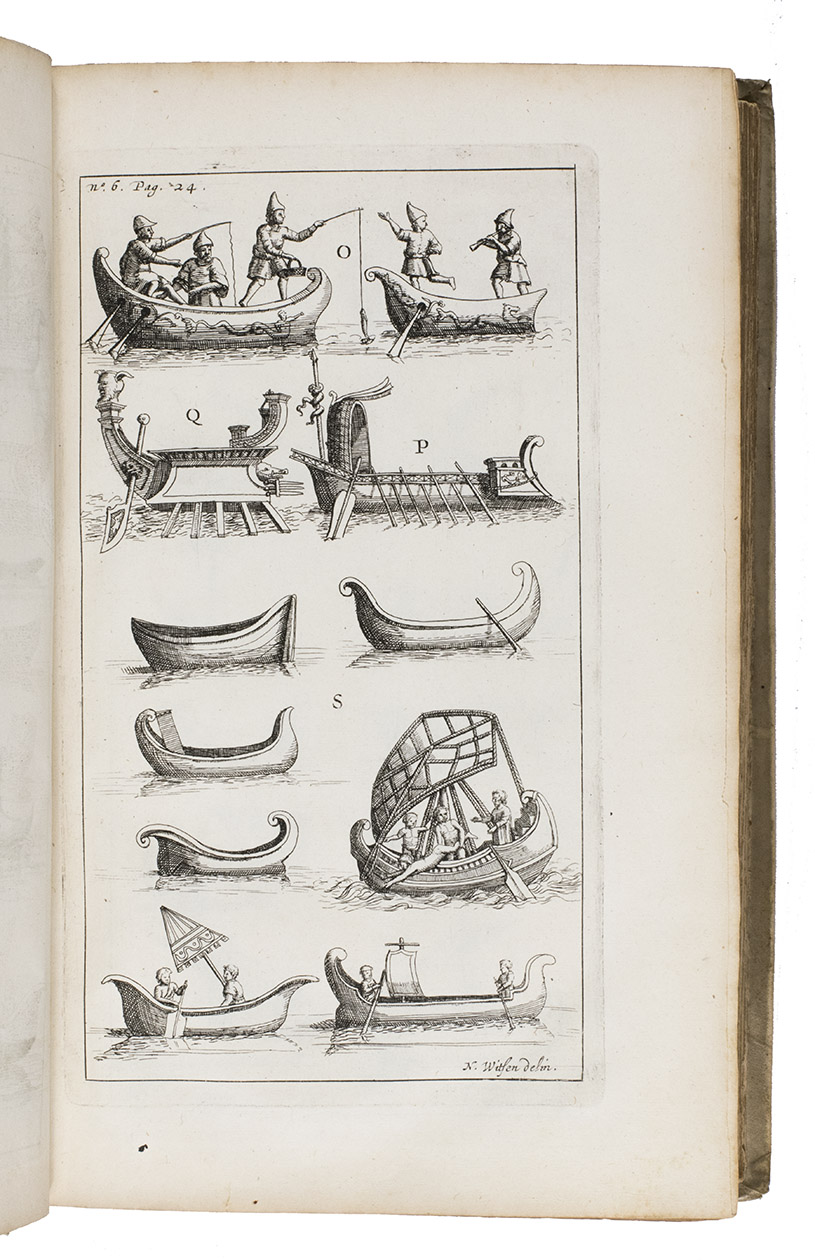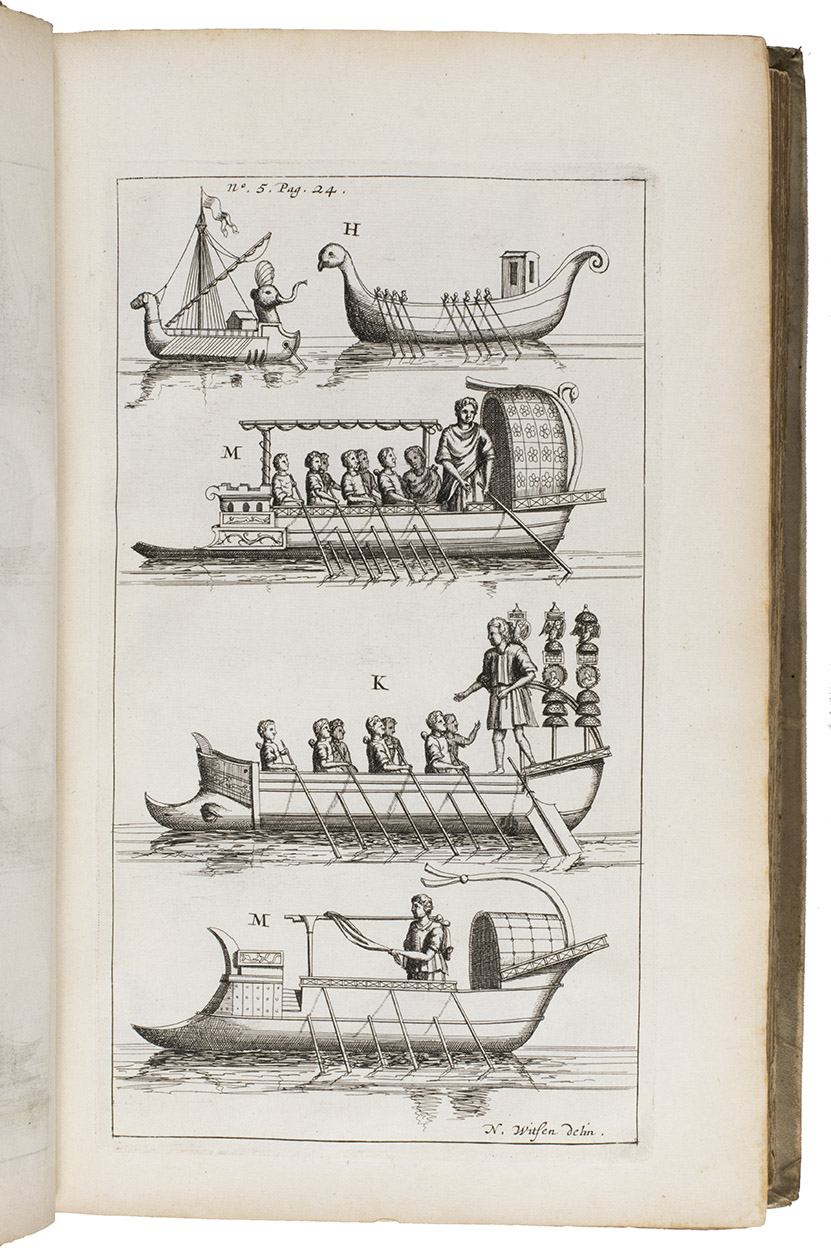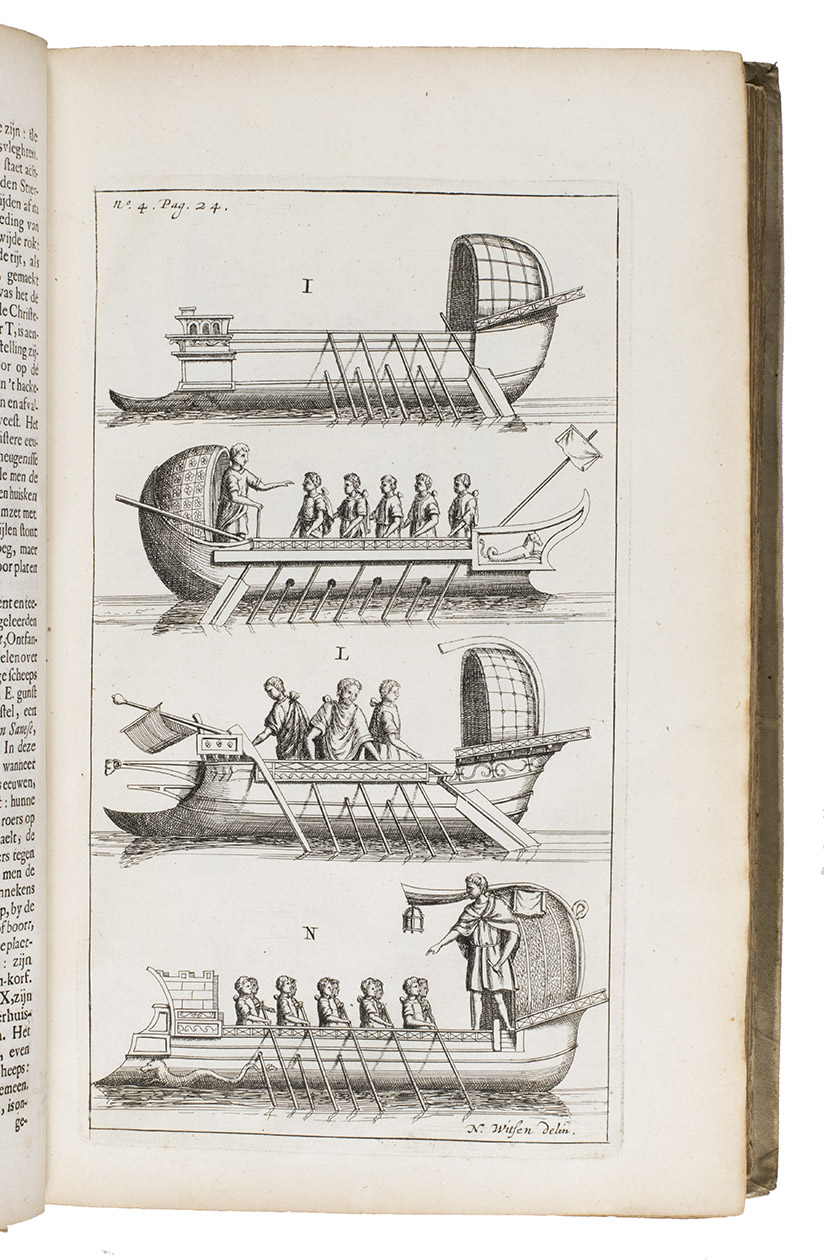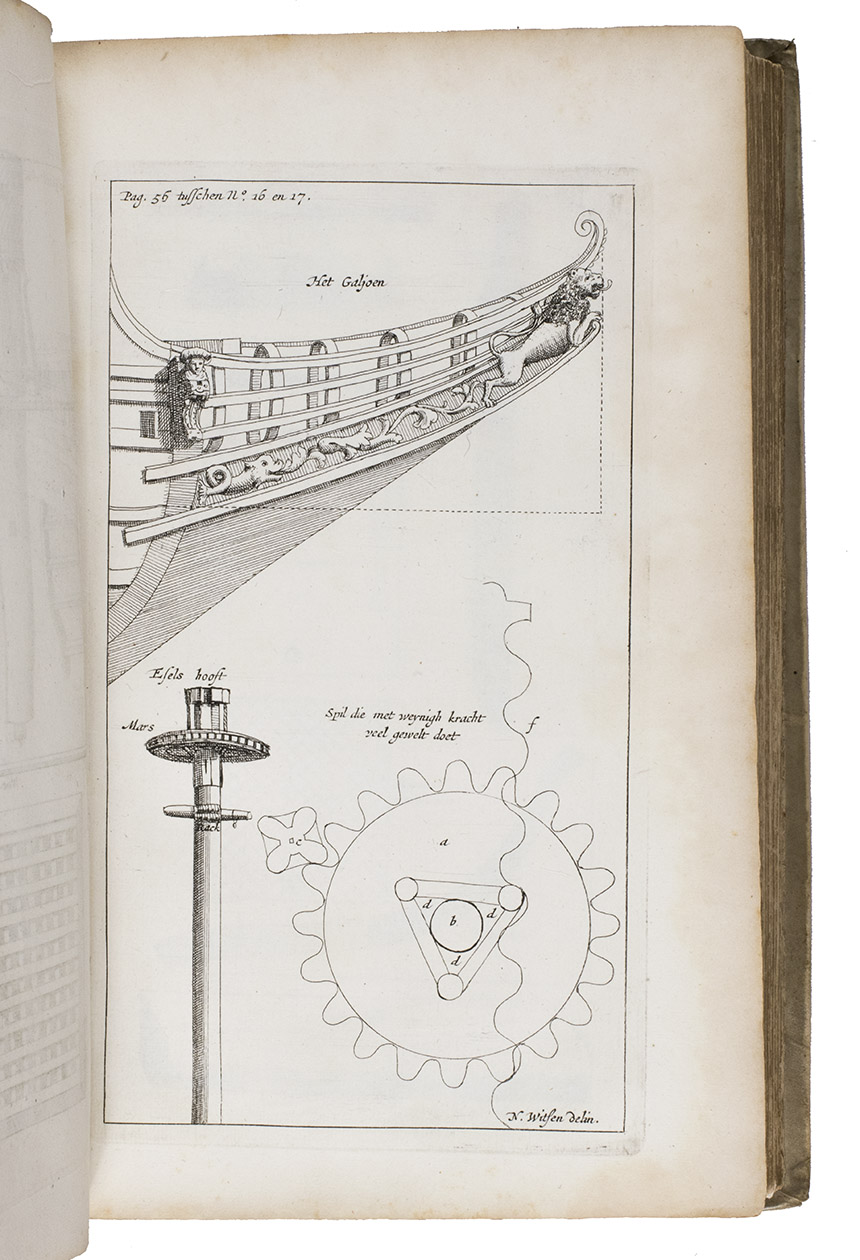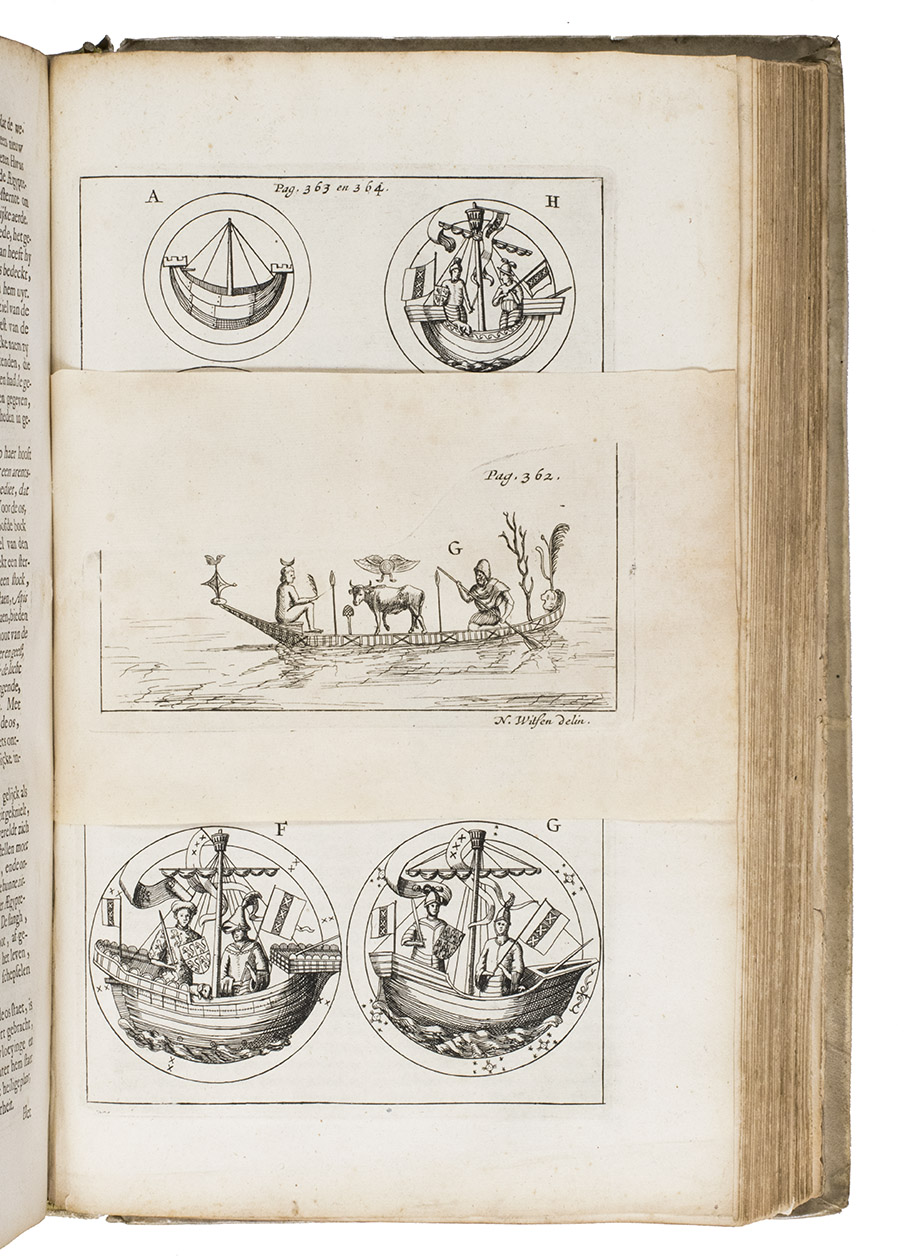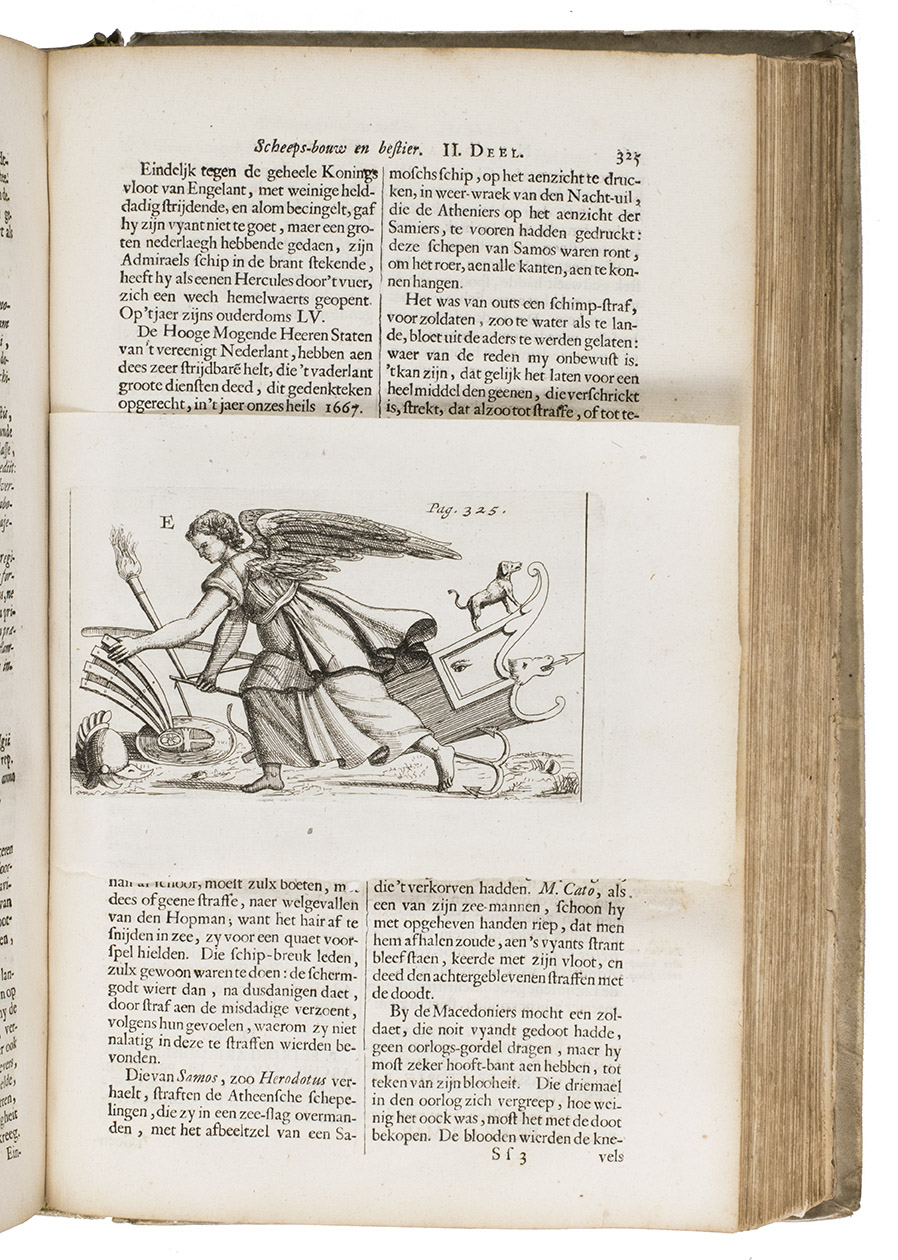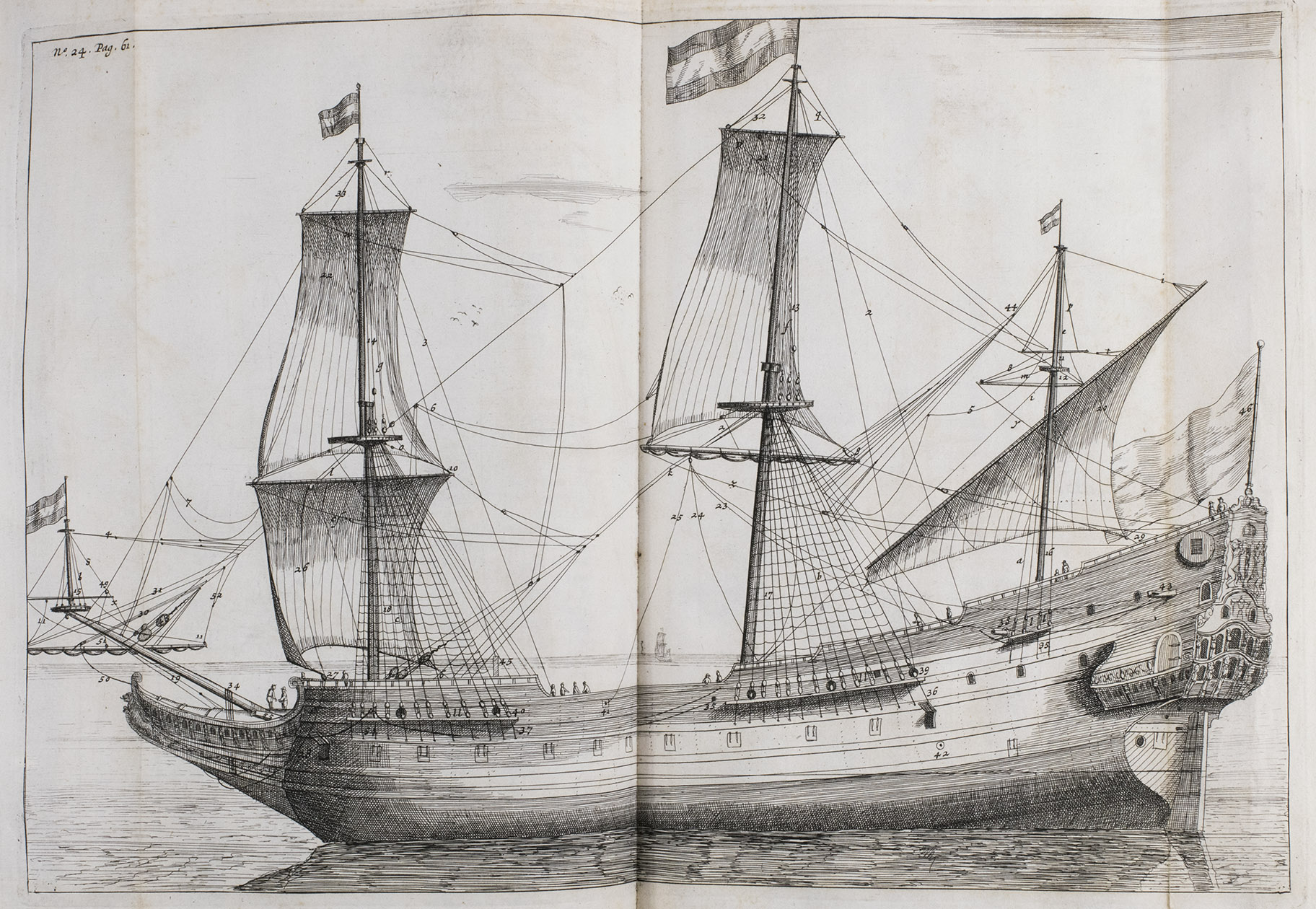WITSEN, Nicolaes.
Aeloude en hedendaegsche scheeps-bouw en bestier...
Amsterdam, Christoffel Cunradus, 1671. 2 parts in 1 volume. Folio. With an engraved title-page by Romeyn de Hooghe, 112 full-page engraved plates, 1 folding double-page engraved plate and 7 small engraved plates printed on smaller strips of paper. With a small woodcut ornamental vignette on the title-page, woodcut decorated initials and woodcut ornamental tail-pieces. Near contemporary (18th-century?) elaborately blind-tooled vellum, sewn on five supports with corresponding raised bands on the spine, with a manuscript title in the second (of six) compartment on the spine, later brown leather ties. [16], 516, 40, [4] pp.
€ 22,500
Extremely rare issue of the first edition of Witsen's incredibly influential work on 17th-century Dutch shipbuilding techniques and styles. The other issue appeared in the same year with the impressum of C. Commelijn and J. Appelaer, instead of C. Cunradus. Both contain the same engraved title-page by Romeyn de Hooghe, but the principle difference can be found in the letterpress title-page, with ours being printed in black and showing a different vignette.
Notably, Witsen's work contains more than 110 meticulously detailed engraved plates based on drawings by the author himself. Considered the definitive work on shipbuilding, Aeloude en hedendaegsche Scheepsbouw was the product of Witsen's passion as a wealthy enthusiast and future regent. Only someone connected to regent circles would have had access to the exclusive information contained within its pages. The book, a precious item that required a deposit of twelve guilders, would primarily have graced the libraries of affluent members of Dutch society.
In order to mitigate the risks associated with its publication, the publisher Casparus Commelijn collaborated temporarily with the Appelaer brothers, Broer and Jan. They also enlisted the services of Christoffel Cunradus, a printer from Amsterdam. However, once the book was printed, Witsen chose to retain its publication indefinitely to incorporate necessary additions and corrections. Consequently, the book has an intriguing early history. There are variations in the number of plates in different copies of this work, with Landwehr documenting 112 plates, while the present copy contains 112 full-page plates, 1 double-page folding plate and 7 additional small engraved plates.
Nicolaes Witsen (1641-1717) served as mayor of Amsterdam for 13 separate terms and held important administrative positions in the Dutch East India Company (VOC). The present work brought him in contact with tsar Peter the Great, who enlisted Witsen's assistance in modernising the Imperial Russian Navy. This connection also led to the tzar placing orders for warships from Amsterdam shipyards. In 1697, Witsen arranged a four-month training period for the tzar at the VOC shipyards.
Born into a prominent Amsterdam merchant family, which produced several mayors, Witsen's father, Cornelis, also held numerous significant positions, including mayor, councilor of the admiralty, director of the West India Company, and sheriff. In 1682, Nicolaes Witsen assumed the role of mayor of Amsterdam. He was reelected to this influential position every other year until 1706, serving a total of thirteen terms, the maximum allowed. However, at the time of the publication of his great book in 1671, Witsen had yet to hold any official office. From a young age, he dedicated himself to research and acquiring knowledge, particularly in the fields of mathematics and natural sciences. Although his true passion lay in the realm of science, his family responsibilities and obligations pushed him toward a career in city administration. Eventually, he managed to combine his passion with his responsibilities. Witsen's parents provided him with ample opportunities for growth and development. Between 1664 and 1672, he embarked on several journeys, including an eleven-month stay in Moscow as part of an embassy, a grand tour of Italy, and multiple visits to England. These travels served not only to enrich his personal growth but also to explore and establish potential diplomatic and trading connections. Witsen documented his experiences in diaries, sketches, and notes. These records formed the basis for the present work and other works like Noord- en Oost Tartarije (published in 1692). The fifteenth chapter of Aeloude en hedendaegsche Scheepsbouw, for instance, recounts his visits to the most significant shipyards in those countries.
With a small 18th-century manuscript note tipped in before the letterpress title-page: "Op het schip Hilversbeek (?) de Ao 1741 ...", a small black stamp on the front paste-down "10 [...?] 1969" and the printed coat of arms of Ortt pasted on the front paste-down next to the stamp. The binding is slightly scuffed, the front hinge has been reinforced and new brown leather ties have been added. The engraved title-page is slightly damaged in the gutter, not affecting the engraving and with some small tears in some pages, not affecting the text or plates, the edges and outer margins are very slightly browned. Otherwise in very good condition. Bierens de Haan 5368; Hoogendoorn, Witsen N04; Landwehr Romeyn de Hooghe, 16; NHSM p. 743; NNBW IV, 1473; STCN 240219058 (2 copies).
Related Subjects:
